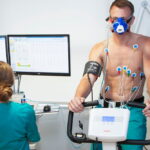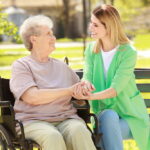Imagine a world where the elderly could age gracefully in the comfort of their own homes, surrounded by cherished memories and the warmth of familiar surroundings. In this realm of personalized care, family-led Live In Care For Couples as well as for the elderly stand out as a beacon of hope, offering a unique blend of professionalism and the nurturing touch of loved ones. In this article, we delve into the heart of in-home harmony, exploring the ins and outs of family-led live-in care solutions and the transformative impact they can have on the lives of seniors.
The Essence of Family-Led Live-In Care
At the core of family-led live-in care lies a commitment to preserving the dignity and independence of individuals in their golden years. Unlike traditional care facilities, this model places the spotlight on the intimate setting of one’s home, fostering a sense of familiarity and security. It’s a testament to the belief that aging doesn’t have to mean leaving behind the comforts of home.
Benefits that Resonate:
– Personalized Attention: One of the primary advantages of family-led live-in care is the individualized attention it provides. Dedicated caregivers, often family members or close friends, ensure that the unique needs and preferences of the elderly are not just met but celebrated.
– Emotional Well-being: The emotional well-being of seniors is paramount in family-led care. Surrounded by loved ones, individuals experience a profound sense of belonging, reducing feelings of isolation and depression commonly associated with institutionalized care.
– Maintaining Relationships: For couples facing the challenges of aging together, family-led live-in care becomes a haven. It allows spouses to stay connected, share their journey, and navigate the ups and downs of life side by side, promoting a sense of togetherness.
Navigating Live-In Care for Couples
When delving into family-led Live-In Care For Couples, a pivotal consideration lies in customizing the approach to accommodate the distinctive dynamics of couples. Here’s a more in-depth exploration:
– Shared Spaces: Recognizing the significance of shared spaces for couples, family-led caregivers prioritize creating an environment that fosters togetherness. Whether it’s a cozy living room that encourages quality time or a tranquil garden for peaceful moments, these shared spaces play a crucial role in maintaining the emotional bond between individuals.
– Individualized Care Plans: Understanding the inherent differences in the needs of each person within a couple, family-led live-in care takes a personalized approach by crafting individualized care plans. This thoughtful strategy ensures that both individuals receive the specific attention and support necessary for their unique circumstances. By tailoring care plans to individual requirements, family-led caregivers can address diverse health conditions, preferences, and emotional needs.
– Social Engagement: Going beyond the conventional role of caregivers, family-led caregivers seamlessly transition into companions for couples. Recognizing the importance of social interaction for overall well-being, they actively facilitate engagement opportunities. This may involve organizing outings, arranging game nights, or simply creating spaces for shared moments that contribute to a fulfilling and enriched quality of life.
The Role of Professionalism in Family-Led Care
While the family connection forms the heart of this care model, professionalism is the backbone that ensures a high standard of support and assistance.
Key Professional Aspects:
– Training and Certification: Family-led caregivers undergo specialized training to equip them with the skills needed for the unique challenges of live-in care. This includes understanding medical needs, managing medications, and providing emotional support.
– Communication with Healthcare Providers: In a family-led care setting, communication with healthcare providers is crucial. Caregivers work hand-in-hand with medical professionals to ensure that the health and well-being of their loved ones are monitored and addressed effectively.
– Respite Care Options: Recognizing the importance of occasional breaks for family caregivers, respite care options are often integrated into family-led live-in care solutions. This allows family members to recharge, ensuring a sustainable and effective caregiving arrangement.
Choosing Family-Led Live-In Care: A Practical Guide
There are certain factors that one needs to consider before choosing a Family-Led Liv-In care. By delving into these factors with meticulous attention, individuals and families can make informed decisions about opting for family-led live-in care, fostering an environment that prioritizes the well-being and comfort of those in need.
Factors to Consider:
– Assessment of Needs: Initiating the process involves conducting a comprehensive assessment of the specific requirements of the individual or couple in need of care. This extends beyond merely addressing medical conditions and should encompass considerations related to mobility issues and emotional well-being. By delving into these intricacies, a more tailored care plan can be devised.
– Availability of Family Caregivers: A critical aspect is ensuring the presence of dedicated family members or friends who are not only willing but also capable of taking on the responsibilities of live-in caregivers. Open communication becomes paramount, necessitating discussions about roles, expectations, and potential challenges that may arise during the caregiving journey.
– Financial Considerations: While family-led live-in care may present a more cost-effective alternative compared to certain care facilities, a realistic approach to financial planning is imperative. This involves not only estimating the day-to-day costs but also factoring in potential expenses such as training for family caregivers and arranging for occasional respite care. This holistic financial assessment ensures that the chosen care arrangement remains sustainable in the long run.
– Support Networks: Establishing a robust support network is crucial for the success of family-led live-in care. This may involve actively connecting with local caregiver groups, seeking guidance from healthcare professionals, and creating a circle of friends and family who can offer additional assistance when required. The strength of the support system significantly contributes to the overall well-being of both the caregiver and the individual receiving care.
Conclusion:
In-home harmony through family-led live-in care solutions offers a beacon of light for those seeking a dignified and personalized approach to aging. The combination of familial warmth and professional expertise creates a tapestry of support that allows individuals and couples to age with grace, surrounded by the echoes of a life well-lived.
As we continue to explore innovative ways to provide care for our aging population, family-led live-in care stands out as a testament to the enduring power of love, commitment, and the desire for in-home harmony. Embracing this model opens doors to a future where individuals and couples can embark on their golden years with the reassurance that they are not just cared for but cherished in the very heart of their homes.
Read Also
- Why comprehensive health insurance with maternity is beneficial in the UAEWelcoming a child is a significant milestone in any family’s journey. As exciting as this chapter is, it also brings with it a fair share of responsibilities—especially when it comes to planning for healthcare costs. Health insurance is now mandatory in the UAE, but as with any type of insurance, the smallest requirement might not… Read more: Why comprehensive health insurance with maternity is beneficial in the UAE
- Modern Approaches to Adolescent Mental Health Treatment for Lasting RecoveryWith increasing numbers of teens experiencing emotional and behavioral health concerns, adolescent mental health treatment has become more essential than ever. Conditions such as anxiety, depression, trauma and mood instability are on the rise, and effective support must evolve with these growing needs. Today’s treatment models blend evidence-based therapy with flexible access and holistic care, giving… Read more: Modern Approaches to Adolescent Mental Health Treatment for Lasting Recovery
- How to Find a 5-Star Dentist Near YouChoosing a dentist is more than just finding someone who can clean your teeth. It’s about selecting a trusted partner in your long-term oral health. A 5-star dentist not only provides excellent clinical care but also delivers a positive patient experience, from the moment you walk in until the moment you leave. Whether you’re new… Read more: How to Find a 5-Star Dentist Near You
- Your Easy-Peasy Guide to Brewing Amazing MatchaHey there! So, you’ve heard all the buzz about matcha – that vibrant green powder that’s not just pretty but packed with good stuff? It can seem a little fancy and intimidating at first, but trust me, making a delicious cup at home is simpler than you think. Forget complicated ceremonies for now; let’s just… Read more: Your Easy-Peasy Guide to Brewing Amazing Matcha
- Embracing Holistic Wellness: Insights from a Lansing, MI Health CenterReframing Health: Moving Beyond Symptom Management Treating only symptoms often offers quick relief, yet long-term results stay out of reach. When care zeroes in on isolated complaints, the bigger picture, such as stress, behavior, or lifestyle, often gets missed. Research shows that whole-person care, which looks at physical, emotional, and environmental factors, yields better outcomes… Read more: Embracing Holistic Wellness: Insights from a Lansing, MI Health Center
- VO₂ Max Testing Explained: What It Is & Why It Matters for Your HealthVO₂ max sounds like a term reserved for elite athletes, but it’s among the most accurate measures of your lifetime and general condition. Moreover, it goes beyond performance. Monitoring your VO₂ max will help you to ascertain your body’s capacity to control stress, its oxygen consumption efficiency, and your internal ageing process. If you have… Read more: VO₂ Max Testing Explained: What It Is & Why It Matters for Your Health
- So, what exactly is matcha?Think of matcha as green tea turned up to eleven! Instead of steeping leaves and tossing them out, matcha is made by grinding whole green tea leaves into this super-fine, vibrant green powder. You whisk it right into hot water (or milk!), meaning you’re drinking the entire leaf. That’s why folks say you get way… Read more: So, what exactly is matcha?
- How to Tell When It’s Time for Professional Senior Care SupportCaring for an aging loved one is a journey filled with love, patience, and difficult decisions. One of the toughest choices families face is knowing when it’s time to seek extra help. In this article, trusted Los Angeles caregivers for seniors explore the signs that it might be time to bring in professional support, not… Read more: How to Tell When It’s Time for Professional Senior Care Support









